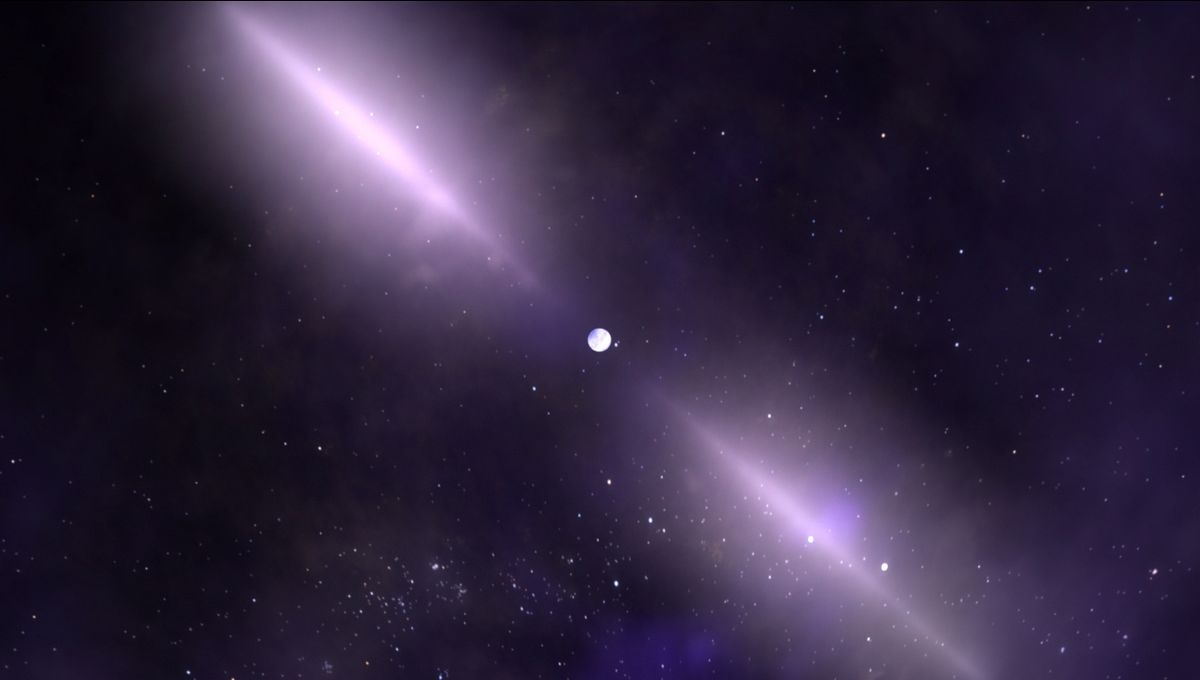
Pulsars are some of the best clocks in the universe, surpassed only by the most advanced timekeeping pieces we have invented. They are the product of a supernova explosion, living behind a neutron star rotating rapidly and releasing pulses of light. Those are the beats of these cosmic clocks. And they might be used to find invisible stuff floating about in the Milky Way.
The crucial idea behind the research comes from general relativity. Being inside a gravitational field affects the passing of time. So Professor John LoSecco reasoned that it could be measurable as long as you know very well how often these pulsars are flashing at us.
Luckily for his idea, many groups of scientists have been working on precisely catalogs such as this. The goal of those catalogs is the creation of the Pulsar Timing Array. Using the pulses and knowing them with enough precision, it is possible to use these stellar objects as a gravitational wave observatory, spanning thousands of light-years. But getting the precision necessary was truly a feat.
I have been warned not to call them planets, not to call them dark matter, just call them mass concentrations.
Professor John LoSecco
“The pulsar doesn’t exist in isolation. These pulses come from these millisecond pulsars, many of which are found in binaries. So they’re moving around, they’re in orbit around another object. And so you have to remove all that motion. The Earth is moving around the Sun. You have to remove that motion. You have to move all this motion so you can get the actual time of arrival,” Professor LoSecco, from the University of Notre Dame, told IFLScience.
If you remove the motion you have the precise interval of the pulses. And if a massive object passes in front of your pulsar, suddenly the pulse is longer. An object the mass of the Sun would create a delay of 10 microseconds. This is tiny in terms of human timings but for the precision in the Pulsar Timing Array, it is a big value.
“There were 12 candidates and they come from eight independent pulsars,” LoSecco told IFLScience. The pulsar catalog used 65 millisecond-pulsars that have been tracked up to 10,000 days. Some events are very statistically significant. The masses involved can be small relatively speaking. One was about one-fifth of the mass of the Sun.
If these candidate detections are real, the question is what are they? They could be massive rogue planets – planetary objects that were kicked out from their planetary systems. They could be small stellar objects like a brown dwarf or a white dwarf. They could be clumps of dark matter, just floating about across the galaxy. The astronomer is upfront that we can’t tell just yet.
“I have been warned not to call them planets, not to call them dark matter, just call them mass concentrations because, just by looking in the radio, you can’t determine what they are. I can’t even guarantee that they’re dark. They could be a brown dwarf or some sort of a white dwarf or something else,” Professor LoSecco told IFLScience.
The research is an exciting work in progress and LoSecco is keen to hear other scientists’ ideas and opinions about the work. “I am looking for people to criticize because it gives me ideas for what to go back and look at and to be skeptical about the result,” he told us.
Professor LoSecco presented his findings at this week’s National Astronomy Meeting at the University of Hull.
Source Link: Universe’s "Timekeepers" Hint At Invisible Structures Floating In The Milky Way